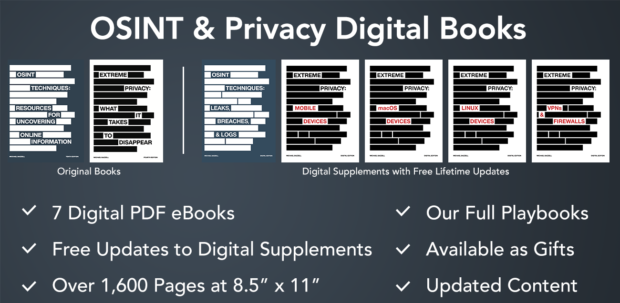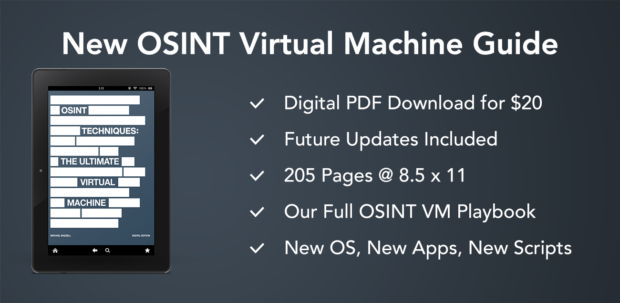For many years, I promoted Twilio as a Voice over Internet Protocol (VoIP) provider. They allowed me and my clients to generate unlimited telephone numbers in order to keep our true cellular number private.We had a good run, but I no longer recommend Twilio for any purpose. The problems started many months ago when they stopped providing actual customer support in favor of canned messages, followed by automatically closed tickets. Then things got worse. Earlier this year, our Twilio account was suspended because I executed a Lookup API request within a Linux virtual machine instead of through a traditional macOS host. Twilio refused to answer any of my questions, and I never received any details about the incident. We were simply kicked off of their service, even though we had a substantial balance on the books. This can be devastating when you rely on them for telephone service, and a risk I cannot take with my clients.
Last year, I began recommending VoIP.ms as an alternative to Twilio and Telnyx for those having trouble with their services. Today, I prefer VoIP.ms over the other options for many reasons explained momentarily. The entire VoIP.ms sections of all digital guides were overhauled for March in order to present many new desired features and full tutorials for mobile and desktop environments.If you purchased my Mobile Devices, macOS Devices, or Linux Devices PDF guides, please watch for a new version on March 1, 2024 with many updates for VoIP.ms. The following is a summary of risks and benefits for these providers, and the reasons I now rely exclusively on VoIP.ms.
Twilio: I have heard from many readers that Twilio is now refusing new service to individuals and small companies. Many people are simply unable to obtain new service or maintain their existing account. Twilio's configuration can be very difficult at times, but stable once established. If you want incoming SMS access, you must configure your own web server. Twilio prohibits outgoing SMS messages entirely unless you enroll (and pay) for 10DLC registration (which I do not recommend). I believe Twilio is now the worst VoIP option today, but those who have an established account should keep it if it works for them. As a final nail in the coffin, this week I began receiving spam email messages to the email address I use for my Twilio account. This email address has never been used anywhere else, so something is going on over at Twilio.
Telnyx: : I have also heard from many readers that Telnyx is now scrutinizing service to individuals and small companies, with many people unable to establish new service. In late 2023, my Telnyx account was suspended for unknown reasons and I had to fight for several days to regain access. Telnyx's configuration can also be difficult at times, but very stable once established. They also require a web host for SMS access and Telnyx prevents outgoing SMS messages unless you enroll (and pay) for 10DLC registration (which I do not recommend). Much like Twilio, their portal functions are targeted toward business API users, and not individuals. I still maintain a few Telnyx numbers for personal use.
VoIP.ms: A few years ago, I could not establish new service at VoIP.ms without uploading ID and confirming my identity. Today, their new account creation algorithm is less scrutinous, and many people are reporting the ability to open an account easily. VoIP.ms does not refuse service to individuals like Twilio and Telnyx does. They allow full configuration of new numbers, calling services, text messaging, forwarding, voicemail, caller ID, and other features within their web portal without the need to access their API or a web host. VoIP.ms does NOT restrict outgoing SMS from individuals and does not require 10DLC registration for personal use. Mobile users can rely on Acrobits Groundwire (paid) for full access to incoming and outgoing calls and SMS while Graphene OS users can rely on Sipnetic and the VoIP.ms SMS app (both free) for all functions. Even Linphone (desktop or mobile) can facilitate all calls and text messages from VoIP.ms, which Telnyx and Twilio cannot match. My devices are set up with incoming caller ID and I see the full name of almost anyone who calls, even from most cellular and VoIP numbers. This is enabled with a simple toggle in the web portal, while Twilio makes it difficult.
Last week, I helped someone configure VoIP.ms on their mobile device. We were able to fully configure over twelve numbers within the web portal (they have extensive needs), and they now have a single-app solution on their device with full push services for all of these numbers, allowing incoming and outgoing calls and SMS text messages. I find that impressive for a DIY solution. We also configured desktop access for all calls and copied all text messages to a secure email account for times when mobile was not accessible. I know of no other service which allows all of this, plus it is more affordable than Twilio.
We are told that using our new VoIP.ms affiliate link (https://voip.ms/en/code/IntelTechniques) may result in less scrutiny on new accounts as long as you use your real name for KYC requirements (we do not see any of your information). Since we associate our VoIP numbers with our true name to prevent contamination of our cell number, I never see a reason to use an alias for VoIP access. That just creates problems if you ever need to prove ownership, much like a domain registration or personal email account. The more transparent you are during account registration, the more likely you can bypass identity verification. I discuss this further in the guides. However, I NEVER recommend sending a copy of your ID to any company, and encourage you to fight this if requested. I was never asked to provide any ID since they were able to verify me through my domain in my email.
Disclosure: I have been an affiliate of Twilio, Telnyx, and VoIP.ms. We receive free credits to our test account when people enroll from our links, which allows us to continue testing new features for these guides. I was not paid for this post and no editorial control or approval was granted (or requested). VoIP.ms has not sponsored any of my content. I simply found a better service, and my clients seem thrilled.


